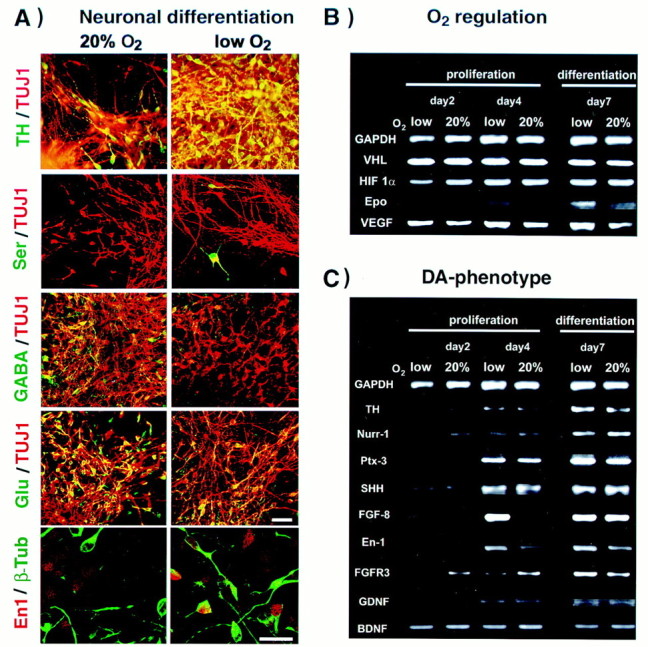Fig. 3.

Neuronal subtype differentiation and molecular characterization of mesencephalic precursors in lowered versus 20% O2. A, Double immunocytochemical labeling of neurons (Tuj1+, red) revealed that lowered O2 culturing markedly increased the fractional yield of dopaminergic and serotonergic neuronal subtypes but decreased the fractional yield of GABA+ and glutamate+ neurons (all subtype labels,green). The 20% O2 colony is an example of high GABA expression under these conditions. TH and GABA were not coexpressed as in some developing neurons in vivo. The percentage of neurons expressing the midbrain transcription factor En1 was increased in lowered O2. Scale bars, 20 μm.B, C, Semiquantitative PCR demonstrates differential gene expression in CNS precursors cultured in lowered or 20% O2. B, Expression of genes involved in the physiological response to changes in oxygen levels. The expression of HIF1α, VHL, Epo, and VEGF was assessed after 2 or 6 d of expansion and after 4 d of differentiation in lowered or 20% O2. Data are normalized to GAPDH expression. A significant increase in Epo expression was detected in lowered versus 20% O2 mostly during differentiation, whereas VEGF was upregulated during both expansion and differentiation. No O2-dependent regulation of HIF1α or VHL messages was observed. C, Candidate genes involved in midbrain dopaminergic neuron development were also tested for O2-dependent differential expression. Increased expression of TH and Ptx3 during differentiation confirmed the larger number of functional dopaminergic neurons in lowered O2 cultures (compare with Fig. 2). Significant increases in expression levels of FGF8 and En1 were also detected in lowered O2.
